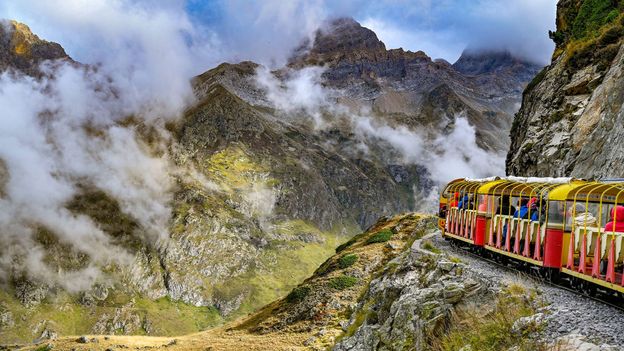My warm-up hike was the 20-minute trek to the dam, a monumental 27m-high concrete wall holding back an ancient, crystalline lake from the dry, fertile valley on the other side. A thick and fast-moving fog turned fellow hikers into ghostly silhouettes and obscured whole mountains, reminding us that up here, nature is a capricious shapeshifter.
After brushing off the last crumbs of my tuna sandwich lunch alongside other picnickers, I tightened my hiking bootlaces and followed signs for the Lacs d’Arrémoulit trail. The 2.5-hour climb ends at the Arrémoulit mountain refuge (2,305m altitude) in the Pyrenees National Park, which straddles the French and Spanish border and features glacial lakes, floral meadows, caves, ravines and ancient peaks and valleys across. The area around the park’s Mount Perdu includes two of Europe’s largest and deepest canyons and is a Unesco World Heritage Site.
The hike started slow and easy, with views of the turquoise Lac d’Artouste in my peripheral vision, and the grass-carpeted mountain peaks looming up ahead. The Pyrenees are older, and some say less dramatic, than the Alps, the higher, snow-capped mountain range to the east. But the mountain landscape here is arguably more rugged and unspoiled and boasts one of France’s most biodiverse ecosystems: 3,000 plant species, and more than 4,000 animal species – including goat-antelopes, brown bears and Egyptian vultures.
With the lake behind me, the climb began to get more challenging and my footing less sure as the trails seemed to grow narrower and rockier with the ascent. But each new step rewarded me with views of pink flowering mosses, pops of purple irises and butter-yellow Adonis flowers, and I followed them like breadcrumbs on a trail.

